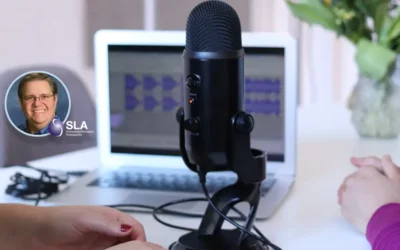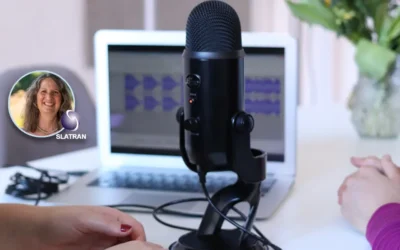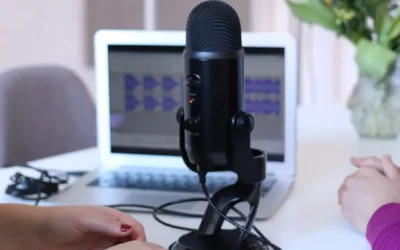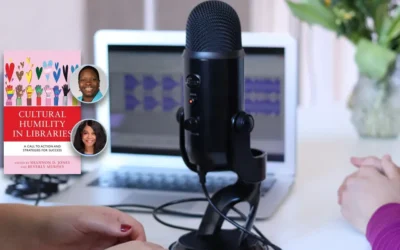Using Open Educational Resources in Your Special Library
Lauren Hays
Budget constraints impact us all. In my own career, there have been tools or resources I would have liked to use, but have been unable to because of the associated costs. Additionally, copyright is another factor and something I am always cognizant of when selecting resources for presentations or other needs.
Consequently, I have started to use Open Educational Resources (OER) more often than not.
You may be familiar with the term Open Educational Resources, but perhaps have not explored it fully. “Open Educational Resources (OER) are teaching, learning and research materials in any medium – digital or otherwise – that reside in the public domain or have been released under an open license that permits no-cost access, use, adaptation and redistribution by others with no or limited restrictions” (UNESCO, 2019, para. 1).
For creators and authors who use Creative Commons to license their work (of whom there are many!), there are different types of open licenses available. Some licenses restrict revisions of the resource, but still allow the original to be shared and used. As a general rule though, OER have five specific usage rights that allow resources to be used as needed. These usage rights are:
- Retain: Make and own copies of the content (e.g. download, duplicate, store, and manage)
- Reuse: Use in a wide range of ways (e.g. in a class, in a study group, on a website, or in a video)
- Revise: Adapt, adjust, modify, or alter the content itself (e.g. translate the content into another language)
- Remix: Combine the original or revised content with other material to create something new (e.g., incorporate the content into a mashup)
- Redistribute: Share copies of the original content, its revisions, or its remixes with others (e.g., give a copy of the content to a friend) (Wiley, 2014, para. 12).
Often, I use open educational resources as they are originally published. However, there are times when I want to modify a resource to fit my needs. To do this, I confirm the specific license placed on the open educational resource. Once I confirm my ability to revise the resource, I make the modifications. Having the ability to customize resources to fit my needs saves time and money while also allowing me to use the best resources.
OER Sites
Below are a few sites that have OER works. However, not everything on each site is fully open. For example, on MERLOT’s site some curated items are copyrighted. Additionally, items in the Internet Archives’ Open Educational Resources are copyrighted per the author’s wishes.
Google: “When you do a Google Search, you can filter your results to find images, videos, or text that you have permission to use. To do this, use an Advanced Search filter called “usage rights” that lets you know when you can use, share, or modify something you find online.”
Internet Archives’ Open Educational Resources: “This library contains hundreds of free courses, video lectures, and supplemental materials from universities in the United States and China.”
MERLOT: “The MERLOT system provides access to curated online learning and support materials and content creation tools, led by an international community of educators, learners and researchers.”
OASIS: “Openly Available Sources Integrated Search (OASIS) is a search tool that aims to make the discovery of open content easier. OASIS currently searches open content from 98 different sources and contains 368,234 records.”
OER Commons: ”OER Commons is a public digital library of open educational resources.”
Open Stax: “There are tens of thousands of learning objects, called pages, that are organized into thousands of textbook-style books in a host of disciplines, all easily accessible online and downloadable to almost any device, anywhere, anytime.”
Conclusion
Using open resources has changed the way I think about selecting content. Once, I started discovering how easy it was to locate open content, I stopped worrying so much about costs and copyright. Instead, I search open content for what I need.
In my next post, I will write about open access.
—————————————————-
References
UNESCO. (2019). Open educational resources (OER). https://en.unesco.org/themes/building-knowledge-societies/oer
Wiley, D. (2014). The access compromise and the 5th R. Iterating Toward Openness: Pragmatism Before Zeal. https://opencontent.org/blog/archives/3221
Lauren Hays
Lauren Hays, PhD, is an Assistant Professor of Instructional Technology at the University of Central Missouri. Please learn more about Lauren and read her other posts about skills for special librarians; then take a look at Lucidea’s powerful ILS, SydneyEnterprise, used daily by special librarians to empower their users.
Similar Posts
Interview with Eugene Giudice, SLA Treasurer
Interview with SLA’s Treasurer about the future of the special library profession and how the Special Libraries Association can benefit librarians
Interview with Cara Marcus on Transportation Librarianship and SLA
Interview with Cara Marcus, the president of the Special Libraries Association (SLA) transportation community about transportation libraries and SLA
Interview with Christian Nappo on the National Librarians of Medicine
Interview with the author of a reference-ready book on the twenty-seven men and women who headed the National Library of Medicine.
Interview with Shannon Jones and Beverly Murphy; Cultural Humility in Libraries
Interview with Shannon Jones and Beverly Murphy, editors of a book about cultural humility and its relevance in healthcare and special libraries.
Hosting service
Enjoy all of the benefits of your Lucidea solution with secure, reliable, stress free hosting
Programs & incentives
No matter your size or budget, we’ve got you covered, today and tomorrow




Leave a Comment
Comments are reviewed and must adhere to our comments policy.
0 Comments